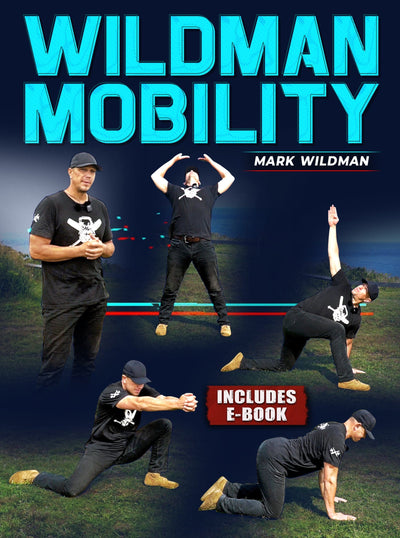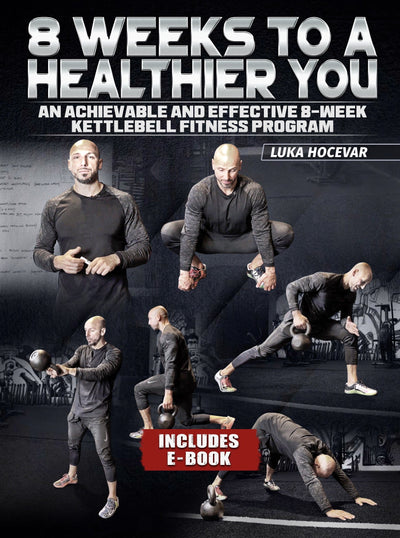Double Kettlebell Squat
When it comes to building raw strength and symmetry, the double kettlebell squat stands as a prime example of an exercise that delivers exceptional results. This challenging movement engages your entire body, from your legs to your core and upper body. In this blog post, we will delve into the intricacies of the double kettlebell squat, exploring its benefits, proper technique, common pitfalls, and strategies for achieving mastery.
What this article covers:
- Benefits of the Double Kettlebell Squat
- Proper Technique
- Common Pitfalls to Avoid
- Strategies for Mastery
- Overhead Squat Kettlebell
- Pistol Squat Kettlebell
- Kettlebell Squat Clean
- Kettlebell Squats: Muscles Worked
- Kettlebell Bulgarian Split Squat
- Strategies for Mastery
Benefits of the Double Kettlebell Squat
The double kettlebell squat offers a plethora of advantages for those seeking to amplify their fitness journey. By wielding two kettlebells, your muscles work in unison to stabilize the added weight. This enhances muscle activation, creating a balanced and symmetrical physique. The engagement of your core, shoulders, and upper back is intensified due to the double load, contributing to improved posture and functional strength. Moreover, this exercise stimulates overall muscle growth, particularly in the lower body, fostering greater muscle definition and endurance.
Proper Technique
Begin by holding a kettlebell in each hand, using an overhand grip. Position the kettlebells at shoulder height or slightly lower, with your palms facing each other. Stand with your feet shoulder-width apart, maintaining a neutral spine and engaged core. As you squat down, push your hips back and bend your knees, ensuring they track in line with your toes. Descend until your thighs are parallel to the ground or lower, while maintaining an upright chest and proper posture. Push through your heels to rise back up to the starting position.
Common Pitfalls to Avoid
Avoid leaning too far forward, as this could strain your lower back and compromise your form. Keeping your chest up helps prevent this. Additionally, ensure your knees track over your toes and avoid letting them collapse inward. This safeguard maintains knee joint integrity and prevents potential injuries. Lastly, maintain a strong core throughout the movement to prevent overarching your lower back.
Strategies for Mastery
Start with a manageable weight to focus on perfecting your form. Gradually increase the weight as you become more comfortable with the movement. Incorporate warm-up routines that emphasize mobility and flexibility, as these aspects are crucial for executing the double kettlebell squat with proper technique. Strengthen your core and upper back with targeted exercises like rows, planks, and overhead presses to support the demands of the double kettlebell squat.
Overhead Squat Kettlebell
The overhead squat with kettlebell adds an element of complexity to the traditional squat, engaging the core, shoulders, and legs in a seamless motion. By lifting the kettlebell overhead, you not only challenge your lower body but also enhance your stability and mobility. Maintaining proper form, such as a neutral spine and aligned knees, is crucial to avoid discomfort and ensure a safe movement.
Pistol Squat Kettlebell
The kettlebell pistol squat is an epitome of lower body strength and balance. Balancing on one leg while holding a kettlebell challenges your stability and enhances your proprioception. The key is to descend slowly, keeping the non-working leg extended forward. Maintain an upright posture and push through the heel of the working leg to return to the standing position.
Kettlebell Squat Clean
The kettlebell squat clean combines elements of the clean and squat, offering a full-body challenge. By explosively lifting the kettlebell from the ground to a racked position, you engage your hips, back, and shoulders. The subsequent squat targets your legs and core. Timing is essential in this movement; coordinate the hip extension and the pull to guide the kettlebell to the racked position.
Kettlebell Squats: Muscles Worked
Kettlebell squats work a myriad of muscle groups simultaneously. The primary muscles engaged include the quadriceps, hamstrings, glutes, and lower back. The core muscles play a significant role in maintaining stability, and the shoulders and upper back are activated during the kettlebell-held variations.
Kettlebell Bulgarian Split Squat
The kettlebell Bulgarian split squat hones in on unilateral strength and stability. Placing your back foot on an elevated surface, you descend into a lunge position while holding kettlebells. This exercise targets the quadriceps, glutes, and hamstrings, while also improving balance and addressing any muscle imbalances between the legs.
Strategies for Mastery
Begin with lighter kettlebells or bodyweight to ensure proper form and stability. Focus on mobility exercises to enhance flexibility in the hips, ankles, and shoulders. Strengthen the core through targeted exercises to support advanced kettlebell squats. Gradually increase weight and complexity as your confidence grows.
The double kettlebell squat is an advanced yet immensely rewarding exercise that holds the potential to transform your strength and physique. By embracing proper technique, staying vigilant against common mistakes, and consistently practicing, you can conquer this movement and unlock new levels of power and symmetry. Remember, progress takes time, so exercise patience and relish the journey toward mastering the double kettlebell squat.
Did you find the blog helpful? If so, consider checking out other guides:
- Kettlebell Squats
- Sumo Squats with Kettlebells
- Kettlebell Goblet Squat
- Kettlebell Front Squat
- Kettlebell Swing Squat
- Kettlebell Split Squat
- 15 Minute Kettlebell Workout
- 5 Minute Kettlebell Workout
- 45 Minute Kettlebell Workout
- How Long Should a Kettlebell Workout Be
- Kettlebell Curls
- Kettlebell Hammer Curl
- Kettlebell Crush Curl
- Kettlebell Towel Curl
- Kettlebell Curl to Press





